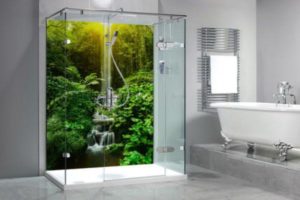
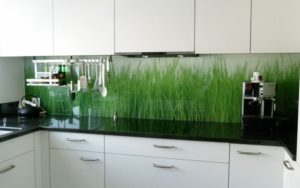
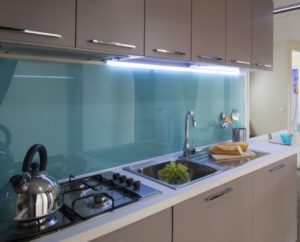
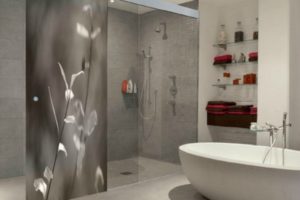
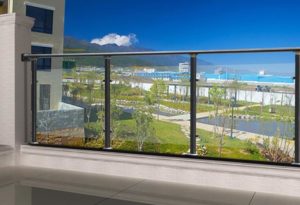
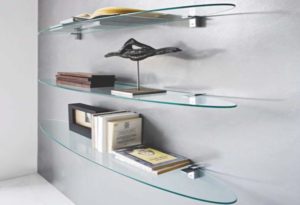
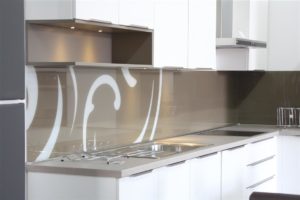
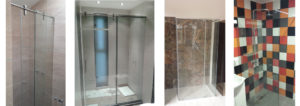

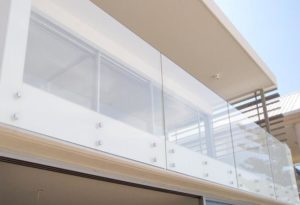
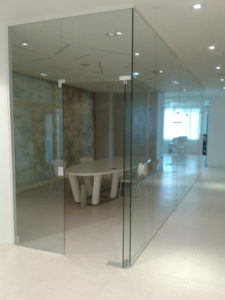
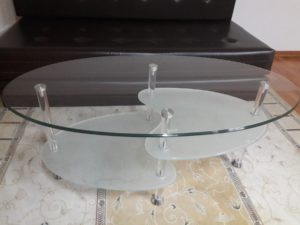

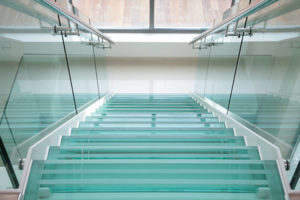
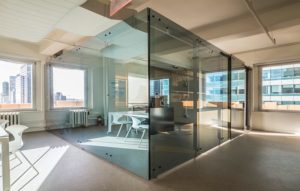
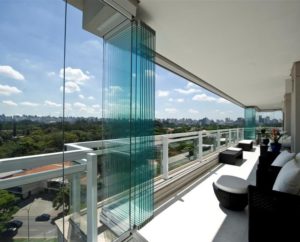
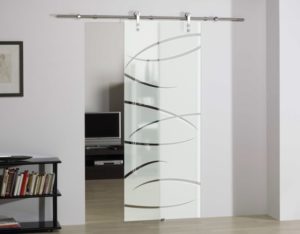 Characteristics and technical data the term toughened (tempered) safety glass we mean thermally treated "normally" glass whose Tensile strength is achieved by the first heat warm the glass to a certain temperature and then rapidly cooled. Zbog specifične toplotne provodljivosti spoljne čestice stakla se pri naglom hlađenju brzo stvrdnu i pri tome onemoguće isto u srednjem dijelu. As a result, increased density of molecules on the surface, and stacks in the middle of the glass. So comes in tempered glass to redistribute substantial tension between molecules on the surface and molecules in the Interior of the glass. This tension must be in balance, which is also the condition for stability that guarantees the safety characteristics of tempered glass, which we can see in the following observation:
Characteristics and technical data the term toughened (tempered) safety glass we mean thermally treated "normally" glass whose Tensile strength is achieved by the first heat warm the glass to a certain temperature and then rapidly cooled. Zbog specifične toplotne provodljivosti spoljne čestice stakla se pri naglom hlađenju brzo stvrdnu i pri tome onemoguće isto u srednjem dijelu. As a result, increased density of molecules on the surface, and stacks in the middle of the glass. So comes in tempered glass to redistribute substantial tension between molecules on the surface and molecules in the Interior of the glass. This tension must be in balance, which is also the condition for stability that guarantees the safety characteristics of tempered glass, which we can see in the following observation:
- increased impact resistance (DIN 52337)
- increased strength to bending: measured value > 120 N/mm2, while with an ordinary glass that value is 30 N/mm2.
- increased resistance to thermal changes: T = 150 K, plain glass 50 K.
In practice we can treat is all the 'float' and ornament glass which can be:
- transparent (colorless) or fully amount painted
- transparent or opaque (eg. ornamentna glass)
- with coated on the outside glass panel (eg. enameled glass)
- a surface treated (e.g.. sandblasting glass)
Deviation straightness glass depend on the thickness of the glass you've struck, about its dimensions and shape of the page and are visible in the form of distortion that we split it into two sizes: total and local distortion. However, for the quality of tempered safety glass are two important characteristics:
- structure of glass fracture
- strength to bending.
Fracture structure is in accordance with DIN 52349 and DIN 1249 T12, while bending strength observed in accordance with the requirements of DIN 52303 T1 and DIN 1249 T12. In the optical sense there may be slightly wavy shades of tempered glass because the furnace at kaljenju glass is moving with the help of hot ceramic rollers. This phenomenon cannot be avoided, and in practice, she look like a mild distortion images. Though the security characteristics of tempered glass and its thermal characteristics (tempered glass well to the temperature difference between the two counts and up to 150 ° C) largely outweigh its disadvantages. While each tempered glass must be wearing visible embedded tag and label manufacturers, from which it is visible that the kaljenom glass. Due to the specific PROCESSING schedule tension tempered glass cannot be further processed after the hardening process, cut, grind, drill holes, trimmed etc. Any such attempt would cause the breakage of the glass into thousands of little pieces. Therefore all preferred and required processing should be done before the heat treatment of glass. Each glass has to be processed before smearing the edge. The lowest degree of processing that satisfies this condition is grinding the edges of the glass. By that we mean just removing the edge sharpness of glass, whilst under the fine grinding we mean machine grinding glass in his over the intersection, where they must not be a rough parts or any physical damage. Also, there are strict rules and tables the minimum distance from the edge of the glass for all holes and vents which are essential when mounting kaljenih elements. Apply with regard to the characteristics of the glass is in mechanical and thermal sense visibly improved, in modern construction tempered glass has its increasingly important place. Nabrojamo some of the possible applications:
- in equipping of residential and commercial buildings
- in the construction of the front room, the front door of tempered glass, automatic revolving door, partition and moving systems, etc.
- in equipping sports facilities
- in participating in the preparation of aluminium glass façade with glass in insulated construction combined with over tempered elements returns and better thermal insulation and proper security in the preparation of the parapet
- in furnishing interiors, making stairs from glass and railings
- in the making of glass furniture etc.
_ _ _ _ _ _ _ _ _ _ _ _ _ _ _ _ _ _ _ _ _ _ _ _ _ _ _ _ _ _ _ _ _ _ _ _ _ _ _ _ _ _ _ _ _ _ _ _ _ _ _ Today it is impossible to say that no safety tempered glass can be build and shape the contemporary architectural design. Features of glass in modern architecture today are virtually limitless thanks to great technological advances in the manufacture and processing of glass for the past 30 years, especially in terms of security. Tempered glass is largely used for glazing Hall, for glass doors, glazing staircase, balcony and parapet (with tempered glass pasting in the laminiranoj variant), for vetrobrane, etc. as for the production of insulating glass in the variants when the thermal protection is just as important as the safety component glassing. In practice, CAL glass of 4 to 7 mm, and the maximum panel size depends on the maximum capacity of the furnace for hardening.
